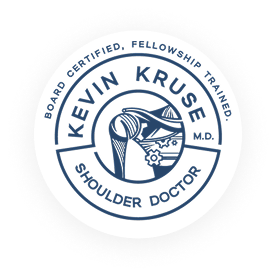Kevin Kruse, MD is a top US shoulder replacement surgeon that has pioneered the shoulder surgery field for over a decade. Dr Kruse focuses on Shoulder Replacement and Rotator Cuff surgery and has performed hundreds of successful surgeries within the Dallas Fort Worth and Plano areas, where his practice is located. Dr Kruse understands the need for patients to understand what they need and how their shoulder replacement surgery will be performed, and has created this comprehensive guide to shoulder replacement surgery.
Shoulder pain can significantly impact your daily life, hindering even the simplest tasks. If you’ve exhausted all non-surgical treatment options without finding relief, shoulder replacement surgery might be the solution you need. In this comprehensive guide, we will explore the intricacies of shoulder replacement surgery, its benefits, risks, recovery process, and what you can expect before, during, and after the procedure.
Understanding Shoulder Anatomy
Before delving into the details of shoulder replacement surgery, it’s crucial to grasp the fundamentals of shoulder anatomy.
The shoulder is a complex joint that comprises several interconnected structures, including bones, tendons, muscles, and ligaments. Each component plays a vital role in enabling a full range of motion and stability. By comprehending the intricate workings of the shoulder, you’ll gain a better understanding of how shoulder replacement surgery aims to restore functionality and alleviate pain.
Indications for Shoulder Replacement Surgery
Shoulder replacement surgery is typically recommended for individuals with severe shoulder arthritis, irreparable rotator cuff tears, or complex fractures. It is important to note that not all cases require surgery, and your orthopedic surgeon will carefully assess your condition to determine the most suitable treatment approach. This section will outline the various conditions that may necessitate shoulder replacement surgery, providing insights into when it becomes the preferred course of action.
Types of Shoulder Replacement
There are different types of shoulder replacement procedures available, each tailored to address specific conditions and patient needs. This section will explore the two primary types: total shoulder replacement and reverse shoulder replacement.
Total Shoulder replacement
The option of artificial or total shoulder replacement, also known as shoulder arthroplasty, arises in cases of persistent pain stemming from arthritis or severe shoulder fractures. Arthritis occurs due to the gradual erosion of cartilage, leading to bone-on-bone friction within the joint. This condition can be triggered by fractures, rheumatoid ailments, tears in the rotator cuff tendons, or the natural wear and tear the joint experiences over time.
An intricate ball-and-socket joint, the shoulder consists of the humeral head (the upper section of the arm bone, known as the humerus) and a smaller socket embedded in the shoulder blade (scapula). Ligaments and the rotator cuff tendons work in tandem to secure the humeral head within the socket. The rotator cuff muscles, which originate from the shoulder blade and transition into tendons, firmly anchor onto the humeral head. In the procedure of shoulder replacement surgery, the humeral head is substituted with a metallic counterpart affixed to a stem for enhanced stability and function.
Reverse Shoulder replacement
In the context of reverse total shoulder replacement, a notable alteration takes place – the switching of the socket and metal ball components. Specifically, the metal ball becomes affixed to the socket, while the plastic cup finds its attachment at the upper extremity of the humerus. This modified approach proves particularly beneficial for individuals grappling with cuff tear arthropathy. The procedure capitalizes on a distinct set of muscles to facilitate arm movement.
In a well-functioning shoulder joint, the rotator cuff muscles play a pivotal role in guiding and empowering arm motion throughout its range. Traditional replacement devices also rely on these rotator cuff muscles for optimal functioning.
However, in cases involving substantial rotator cuff tears and cuff tear arthropathy, these essential muscles lose their functionality. The reverse total shoulder replacement pivots to the deltoid muscle, sidestepping the compromised rotator cuff, to assume the responsibility of powering and positioning the arm. Essentially, it reinstates the functionality that the torn rotator cuff can no longer provide.
The genesis of this surgical innovation dates back to the 1980s in Europe. Its introduction to the United States was officially sanctioned by the Food and Drug Administration (FDA) in 2003.
Preparing for Shoulder Replacement Surgery
Preparing for shoulder replacement surgery involves various aspects, from medical evaluations to lifestyle adjustments. In this section, we will provide you with a comprehensive checklist to ensure you are adequately prepared physically, mentally, and emotionally. Additionally, we will discuss preoperative instructions, including medication management, dietary guidelines, and any necessary physical therapy or exercises to optimize your condition before the surgery.
The Shoulder Replacement Procedure
Now comes the most critical part—the actual shoulder replacement surgery. This section will walk you through the surgical process step by step, explaining the anesthesia options, incision techniques, and the meticulous surgical techniques employed by skilled orthopedic surgeons. By understanding what takes place during the procedure, you can alleviate any concerns or anxieties and have a realistic expectation of the surgery’s outcome.
Dr Kevin Kruse MD demonstrates a Reverse Shoulder Arthroplasty
1. Anesthesia Options: Paving the Way for Comfort
At the onset of the shoulder replacement procedure, patients are presented with diverse anesthesia options. Anesthesia plays a pivotal role in ensuring a pain-free experience during surgery. Depending on the patient’s medical history, preferences, and the surgeon’s recommendations, choices range from general anesthesia, which induces temporary unconsciousness, to regional anesthesia that numbs only the surgical area. The anesthesia phase is meticulously tailored to cater to individual needs, ensuring optimal comfort and safety throughout the procedure.
2. Incision Techniques: Precision in Access
Orthopedic surgeons meticulously select and execute incision techniques to access the shoulder joint. These incisions are strategically designed to minimize scarring while providing sufficient visibility and access for the replacement process. Modern surgical practices often involve minimally invasive approaches, utilizing smaller incisions that reduce tissue disruption, postoperative pain, and recovery time. The adept surgeons’ expertise ensures that the incision is placed with precision, reflecting a balance between optimal access and minimal impact.
3. Surgical Precision: Mastering the Replacement
The pinnacle of the shoulder replacement procedure lies in the surgical precision demonstrated by orthopedic experts. The damaged joint components, often stemming from conditions like arthritis or severe fractures, are meticulously removed. The surgeon then proceeds to replace the worn or impaired components with prosthetic implants, artfully recreating the intricate ball-and-socket mechanism of the shoulder joint. The selection of implant materials and design is a result of thorough assessment and patient-specific considerations, aiming for enhanced durability and natural joint movement.
4. Implant Placement and Closure: Restoring Stability
Once the prosthetic components are securely in place, the surgeon focuses on ensuring stability and alignment. Meticulous attention is paid to the accurate positioning of the implants, mirroring the natural biomechanics of the shoulder joint. This step is pivotal in achieving optimal postoperative functionality and range of motion. Upon confirming the precise placement, the incision is meticulously closed using advanced techniques that promote healing and minimize scarring.
The shoulder replacement procedure is a symphony of medical expertise, cutting-edge technology, and personalized care. From anesthesia options to incision techniques, every facet is calibrated to offer the patient a transformative experience. With an exceptionally skilled orthopedic surgeon like Dr Kruse at the helm, this procedure breathes new life into mobility, enabling individuals to regain an active and pain-free lifestyle.
Recovery and Rehabilitation
A successful shoulder replacement surgery is just the beginning of your journey to restored shoulder function. This section will guide you through the recovery and rehabilitation process, outlining the typical timeline, pain management strategies, and the importance of physical therapy. We will provide you with tips to enhance your recovery, minimize complications, and gradually regain strength and mobility in your shoulder joint.
Risks and Complications
As with any surgical procedure, shoulder replacement surgery carries certain risks and potential complications. This section will shed light on these aspects, enabling you to make an informed decision while weighing the benefits against the potential drawbacks. We will outline common complications, such as infection, blood clots, and prosthesis-related issues, along with their respective preventive measures and available treatment options.
Life After Shoulder Replacement Surgery
The ultimate goal of shoulder replacement surgery is to improve your quality of life by reducing pain and restoring shoulder function. In this final section, we will explore the long-term outcomes of shoulder replacement surgery, discussing activities you can safely engage in, precautions to take, and steps to ensure the longevity of your shoulder implant. By following these guidelines, you can make the most of your new and improved shoulder joint for years to come.
Conclusion
Shoulder replacement surgery is a remarkable medical intervention that has the potential to transform the lives of individuals suffering from debilitating shoulder conditions. Through this comprehensive guide, we aimed to provide you with a thorough understanding of the procedure, from its intricacies to the recovery process. Remember, while this guide offers valuable insights, consulting with the top shoulder surgeon, Dr Kevin Kruse, MD is essential to receive personalized advice and determine the most suitable treatment plan for your unique situation. Take the first step towards a pain-free and functional shoulder by contacting us today to schedule an appointment.

